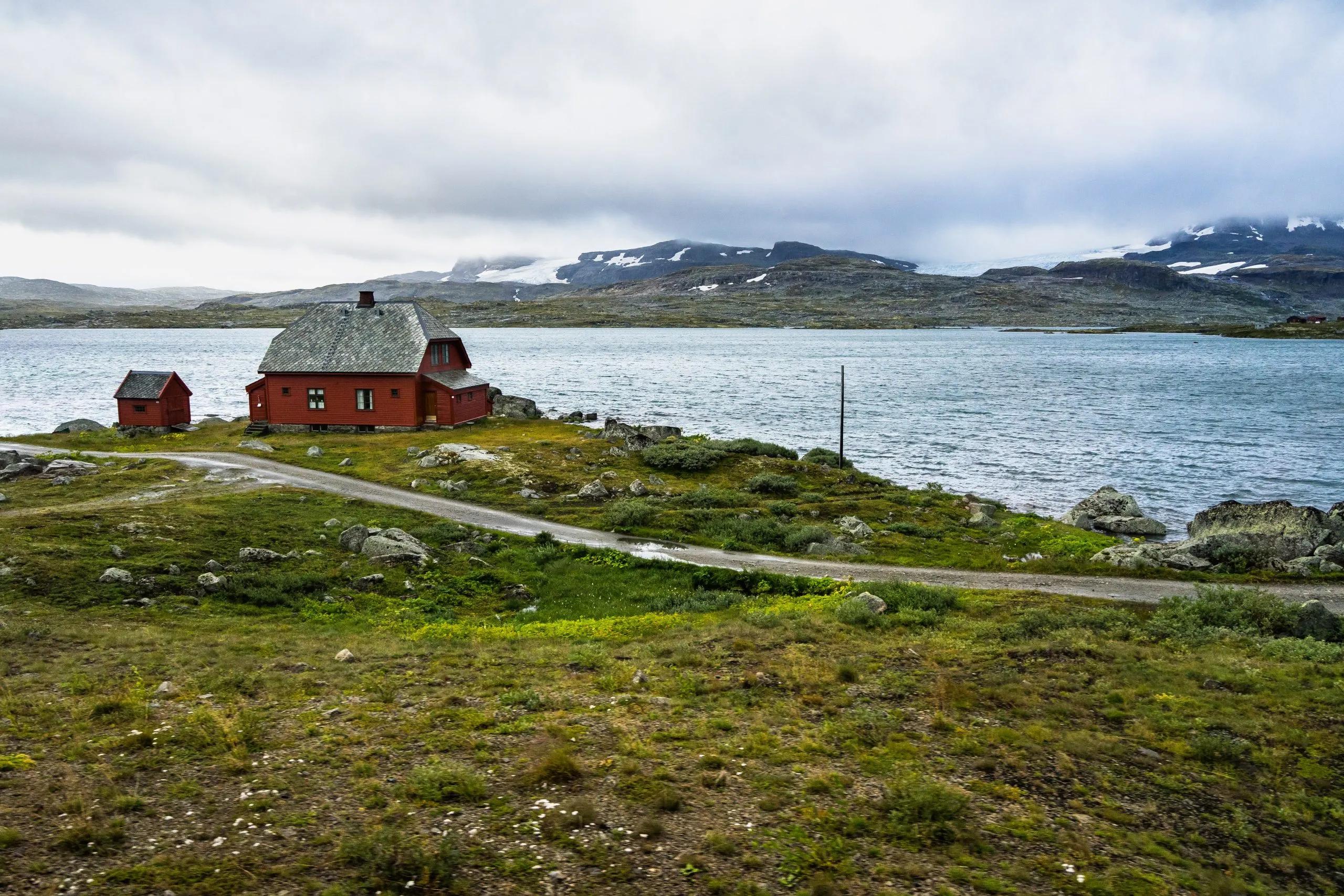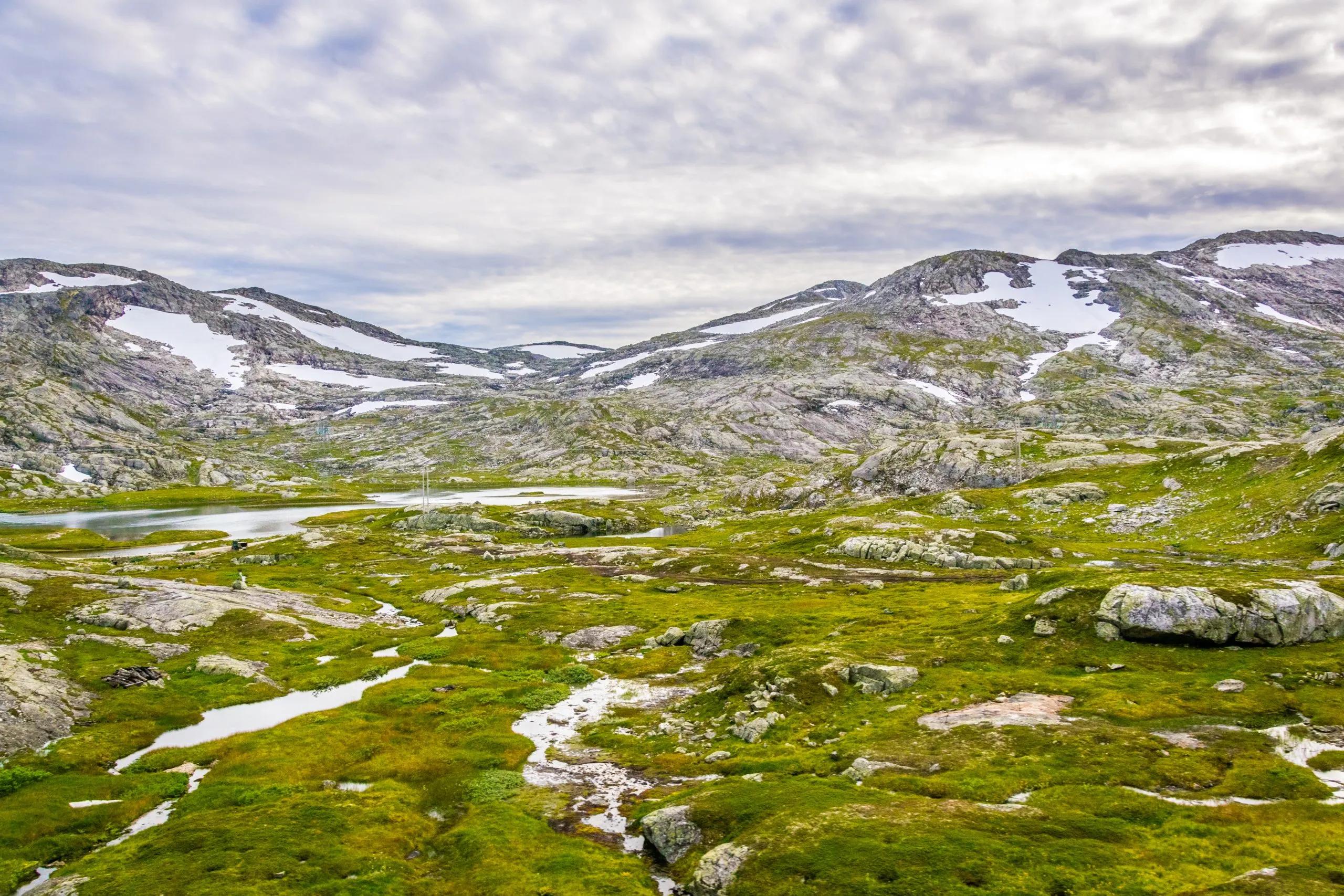










Aurlandsdalen Hut-to-Hut Hike
6 days / 5 nights
|
Starting point
Finse
Finish point
Aurlandsvangen
Season
From July to September
Technical level
2/5
Fitness level
2/5
Tour type
Hut-to-Hut
from:
1.195 €

Starting point
Finse
Finish point
Aurlandsvangen
Season
From July to September
Technical level
2/5
Fitness level
2/5
Tour type
Hut-to-Hut
Highlights
- Experience the beauty of Norway's "Grand Canyon" in Aurlandsdalen Valley
- Traverse the diverse terrain from fjords to mountains
- Explore historic farms like Nesbø¸ and Sinjarheim
- Witness stunning geological features like Vetlahelvete, the largest glacial pothole
- Take in breathtaking views of rivers, waterfalls, and lush valleys
- Engage with the valley's rich cultural history and natural wonders
Itinerary of the trip
FREE ITINERARY
Get Your Travel Itinerary
Loved the itinerary? Enter your email below, and we'll send a copy straight to your inbox.
What’s included in the price?
Self-guided
NOT INCLUDED
What to bring to the tour
- Hiking shoes/boots
- 25 to 45-liter backpack
- Base layer
- Sports T-shirts
- Hiking shorts
- Hiking water-repellent pants
- Waterproof jacket
- Midlayer
- Sports socks and underwear
- Leisurewear for evenings
- Down jacket
- Gloves
- Shade hat/cap
- Warm headwear
- Sunscreen
- Sunglasses
- Headlamp
- Hiking poles
- ID card or passport
- Snacks
- Cash
- Water bottles or hydration pack
- Sleeping liner
- Toiletries
- Toilet paper
- Small first aid kit
Exploring the Aurlandsdalen Valley is like stepping into a vivid painting of Norway's natural splendor. This trek from Finse to Vassbygdi is a gateway to a world where rivers carve through deep gorges, waterfalls cascade from great heights, and mountains stand as silent sentinels over lush valleys.
Known as the "Grand Canyon of Norway," Aurlandsdalen's trail, historically a vital connection between eastern and western Norway, is now a path of discovery, rich in flora and fauna, cultural relics, and geological wonders.
History and nature intertwine here, with paths winding past historic farms like Nesbø and Sinjarheim, telling stories of life once led in harmony with the rugged terrain.
While the hike is challenging, encompassing steep climbs and descents, it is accessible to most hikers who appreciate Norway's untamed wilderness. The route's highlights, such as the imposing Vetlahelvete, a vast glacial pothole, and the serene Aurland River, encapsulate the valley's unique blend of beauty and magnificence.
Each hut along the way provides a haven of warmth and hospitality, offering delicious Norwegian cuisine and a cozy bed to rest.
For our guests, we ensure a seamless journey by managing hut bookings, offering round-the-clock support, equipping them with GPS navigation, and providing a comprehensive travel booklet detailing the rich tapestry of the Aurlandsdalen experience.
So, are you ready to tread through the 'Grand Canyon of Norway'?
Start planning today!
The sooner the better - guaranteed availability and best prices if you don't wait for too long.
Frequently Asked Questions
Ratings & Reviews

5.0 average rating

We had a lovely hike today with our guide Klemen. He personalized the tour on our needs and interests, so that we saw places we wouldn't without his experience. The hike was a little bit slippery after the rain from the last days and it went a lot upwards, but it was totally worth it! Thanks again :)


Our 3 day hike had to be rearranged 2/2 weather, so a one day hike was arranged for us. We appreciated the concern about weather and conditions. Our hike was with Matevz, who was a great guide. Very helpful and knowledgable. Would definitely recommend and will be back for a longer hike one day!
We had a lovely hike today with our guide Klemen. He personalized the tour on our needs and interests, so that we saw places we wouldn't without his experience. The hike was a little bit slippery after the rain from the last days and it went a lot upwards, but it was totally worth it! Thanks again :)


Our 3 day hike had to be rearranged 2/2 weather, so a one day hike was arranged for us. We appreciated the concern about weather and conditions. Our hike was with Matevz, who was a great guide. Very helpful and knowledgable. Would definitely recommend and will be back for a longer hike one day!

HASSLE-FREE
We handle itineraries, accommodations, and anything else you prefer not to deal with, so you can enjoy a carefree hike.

BOOK WITH CONFIDENCE
We are a financially protected company, fully bonded and insured, keeping your money safe and allowing you to travel with confidence.

TRIED & TESTED ADVENTURES
Only the best hut to hut hikes in Europe, cherry-picked by our local team with an in-depth knowledge of the region.

UNBEATABLE SUPPORT
Our 24/7 customer support is where we show our passion, bringing you a better experience by making your well-being our number one priority.


































